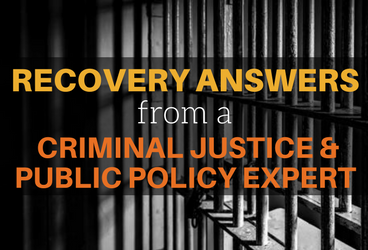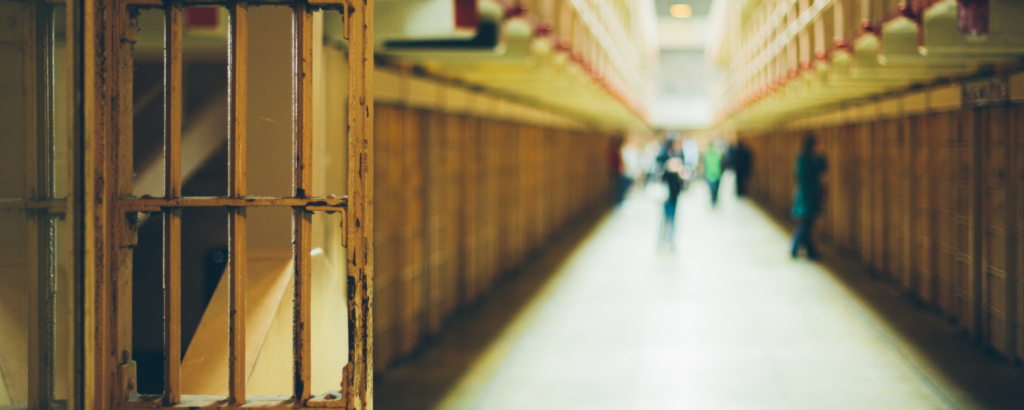
August 28, 2017 |
Love, Hope & Random Drug Testing
By Susan Broderick | 2017

The nation is in the midst of the worst addiction crisis in its history. The Center for Disease Control’s most recent report revealed that the rate of drug overdose deaths has increased 137% since 2000, including a 200% increase involving opioids (CDC 2016).
People are cycling in and out of treatment and both families and communities are desperate to find new ways to respond to the crisis.
While some argue that we can’t arrest our way out of this epidemic, I truly believe that the justice system plays a critical role in how we respond to it. As a former prosecutor, I know that a referral to the justice system can be a motivating force to initiate change. As a woman in long-term recovery, I also know that very often change can be sustained by offering people hope and positive support.
My recommendation is a simple, yet important one: use the leverage of the justice system to turn lives around and get people back on track, not destroy their lives.
Given the crime and public safety concerns generated by compulsive addictive behaviors, the justice system will play a role in responding to this epidemic and I believe it can actually play a transformative role in helping to alleviate this crisis. It can provide the unique leverage and access to treatment that can mark the beginning of recovery. In fact, research confirms the criminal justice system can serve as the motivational fulcrum that can aid treatment retention, improve rates of remission, and decrease relapse and re-arrest over the long-term (Kelly, Finney, Moos, 2005).
Anyone recovering from an alcohol or drug addiction will tell you that they didn’t make the decision to get sober because their life was great. They made the decision because of consequences and/or negative outcomes associated with their use. Very often an arrest or referral to court will be the “bottom” for many individuals with an alcohol or other drug use disorder, that will initiate a willingness to change. Research has confirmed that the most common reason cited for getting sober was “escalating negative consequences” (Laudet, 2007).
What we need to do is to work with those in the justice system to make sure we are doing all that we can to sustain that motivation to change. How do we do this? While there is no single answer, an important component involves providing those on the front lines with a greater understanding of the true nature of addiction and how to best prevent, intervene and support recovery from the disease. The concept of recovery is still relatively unknown to those in the justice system, yet it is a critical component in reducing recidivism.
Over the past twenty years, there have been significant advances in the science surrounding addiction and recovery. Studies have confirmed that addiction is a chronic, yet preventable and treatable disease. Last year the groundbreaking report on “Facing Addiction in America: The Surgeon General’s Report on Alcohol, Drugs and Health” (U.S. Department of Health and Human Services (HHS 2016) highlighted the most recent science and best practices across the entire spectrum – from prevention through recovery support. Given the current epidemic, it is imperative that stakeholders across the justice systems are well educated and trained on these latest findings.
Current efforts to try to initiate and enforce abstinence need to be supported and expanded. During the diversion period or pendency of a court case, conditions such as randomized drug testing can be effective incentives to encourage people to not use drugs or alcohol. Programs such as HOPE Probation and South Dakota’s 24/7 have shown great success in the criminal justice field in both reducing substance use and offending through the use of randomized drug testing (DuPont, 2017).
But drug testing and monitoring are not enough. If we truly want to turn a life around, we must recognize that people need a reason to believe that things can change for the better. Consequences may help initiate change, but in order to sustain change there must be a belief that staying abstinent will be worth the struggle it entails and provide positive incentives for recovery (McKay, 2016).
Providing “alternative re-enforcers” are crucial — rewarding things that a person can do to compete with and replace activities associated with drug use (Volkov, 2011). When drugs and alcohol are taken out of someone’s life, the void must be filled or there will be a return to the drugs and alcohol.
One way to fill that gap, is with involvement with a recovery-supportive peer network. The importance of connecting with others who have been through the same “crisis” and are now on the other side cannot be overstated. Nothing offers greater hope or resilience than seeing someone who has overcome exactly what you are struggling with.
I learned the importance of peers first hand when I made the decision to get sober. I also learned it from my two bouts with breast cancer. In each of those experiences, it wasn’t doctors or professionals who strengthened my resolve, it was the love and support I received from others who had been through it. Survivors told me I could do it too and as living proof, I believed them.
Research confirms that there is a transformative power inherent in hope and other positive emotions (Vaillant, 2012). With all of the pessimism and stigma surrounding addiction, it’s time to change the focus to emphasize the positive possibilities of recovery. In fact, studies have shown that those individuals in recovery often experience a “better than well” effect, in which they find a greater sense of joy and hope in their recovery journey (Hibbert and Best, 2011).
This is not only true with regard to recovery from addiction, but with desistance from offending. The emerging field of “Positive Criminology” centers on the concept that growth and positive change can be a direct result of negative experiences such as arrest and addiction (Ronel and Elisha, 2011). Very often an adverse experience can actually become the turning point for a new way of life (Best, 2012). Both desistance from offending and recovery from addiction are associated with positive life influences that enable the growth of personal and social strengths (Best and Aston, 2015).
Last month I attended the National Association of Drug Court Professionals (NADCP) annual training conference. With over 5,000 attendees, it is one of the most respected and well-attended conferences for those working on the front lines and dealing with substance use and justice issues. In past years, many of the presentations centered on and around treatment, but this year things were different. There was a palpable shift and the concept of “recovery” was featured throughout the panel discussions, workshops and presentations.
I have believed that we are on the verge of a “Recovery Revolution” for quite some time and after attending this year’s NADCP’s conference I am more convinced than ever. The opioid epidemic has (in many ways) created the perfect storm for the emergence of this movement.
The front page headlines of overdose deaths and the adversity caused by this epidemic are giving way to the recognition of just how pivotal the concept of recovery is. Interestingly, this further confirms what the proponents of Positive Criminology espouse: growth and positive change can be the result of negative experiences. The love and hope that surround recovery are being recognized as not just nice to have, but critical components of staying alive.
It’s time we start talking about this revolution.
Susan Broderick, J.D., is an Associate Research Professor at Georgetown University and Project Director of the National Juvenile Justice Prosecution Center. She was an Assistant District Attorney in Manhattan, N.Y., from 1989 to 2003.
Editorial Contributions by: Alexandra Plante

